33 slow cooker secrets EVERYONE should know
Low and slow

Robyn Mackenzie/Shutterstock
Whether your slow cooker is a key part of your cooking regime, a recent addition to your kitchen or a forgotten piece of kit lurking at the back of a cupboard, our tried-and-tested tips and tricks will turn the handy gadget into your trusted sous-chef. With tempting recipes to try, from pasta sauces to sliders, you'll find it can be used all year round, with delicious results – and minimal effort.
Love the idea of getting your slow cooker to do the hard work for you? Read on to discover 33 tips that will help you get the most out of your machine – counting down to our most useful piece of advice of all.
33. Try beef short ribs

Lyudmila Mikhailovskaya/Shutterstock
Tender, falling-off-the-bone short ribs are always a winner; however, you'll need to cook them low and slow, otherwise they'll be tough and chewy. The good news is that popping them in the slow cooker is easier and more economical than using an oven. Simply combine 1 1/2 tbsp salt, 4 tbsp paprika, 4 tbsp each hot chilli powder and brown sugar, 3 tbsp ground black pepper and 1 tbsp each cayenne pepper and garlic powder, then rub the mixture into six short ribs. Leave the ribs to marinate overnight in the fridge, then cook them on low for six to seven hours (or on high for five to six hours).
32. Never cook couscous in a slow cooker

Iaroshenko Maryna/Shutterstock
Don't even attempt to cook couscous in a slow cooker – it’ll just end up as a ball of mush. Couscous doesn’t really need 'proper' cooking at all – just cover it with boiling water or stock, add a lid, then leave it to steam before serving it with your dish of choice. It works really well with tagines and Middle Eastern–style dishes.
31. Try making different breads

Anzhela Klepko/Shutterstock
Did you know you can make bread in the slow cooker? Forget about kneading (and yeast) with this simple soda bread recipe. Rub 3 tsp cold butter into 9oz (250g) each wholemeal and plain flour. Add 1 tsp sea salt, 1 tsp sugar, and 1 1/2 tsp bicarbonate of soda, then incorporate 14fl oz (400ml) buttermilk, mix well and shape into a round. Place the round on a piece of baking parchment, then add it to the slow cooker. Score a cross into the top of the loaf, then place a clean tea towel over the slow cooker, followed by the lid. Cook the loaf on high for two hours and 10 minutes, then cool it on a wire rack.
30. Use more mince

Tatiana Volgutova/Shutterstock
When cooked quickly, minced meat – whether pork, beef or lamb – can end up on the tough side and become quite flavourless. With that in mind, why not have a go at making your favourite mince dishes in the slow cooker? Alternatively, try our tasty Vietnamese-inspired recipe for pork lettuce cups: combine 1 tbsp each ginger paste, sesame oil, lemongrass paste, fish sauce and soft brown sugar with 2 tbsp dark soy sauce, two chopped garlic cloves, two red chillies and 18oz (500g) pork mince. Cook the mixture in the slow cooker on high for two to three hours. When ready, serve the saucy mince with gem lettuce leaves, toasted peanuts, fresh coriander, spring onions and lime.
29. Keep rice for the hob
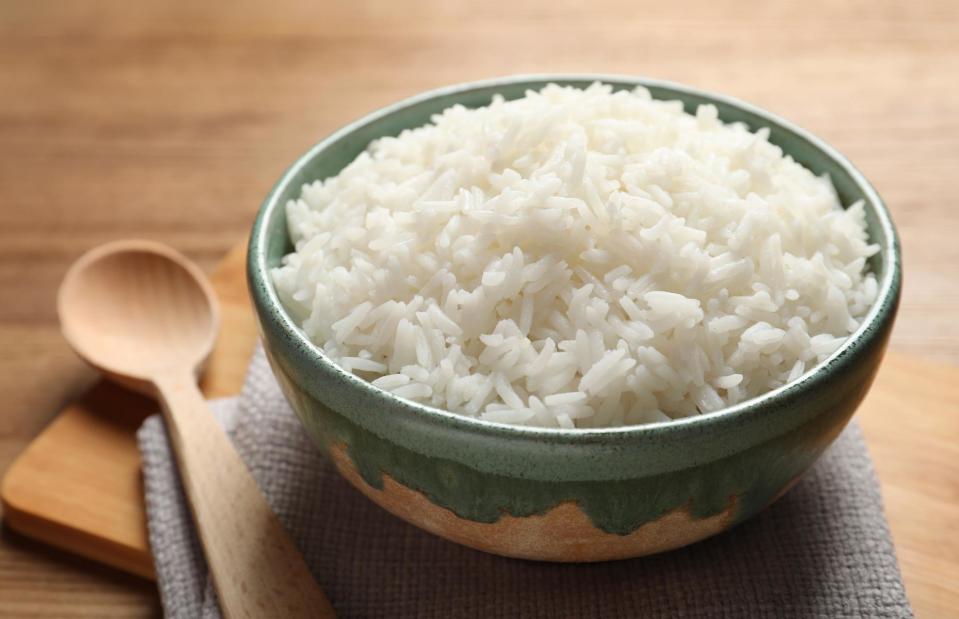
New Africa/Shutterstock
Rice doesn't really work in a slow cooker – it ends up brittle around the edges and uncooked in the centre. Given that it takes less than 30 minutes to cook on the hob or in a rice cooker – and that there's a variety of pre-cooked rice pouches you can buy – it's best to cook it separately.
28. Experiment with desserts

Goskova Tatiana/Shutterstock
It's not all about savoury dishes – you can also use your slow cooker to experiment with desserts. If, for example, you’re craving a rich chocolate brownie, it’s easy to whip one up. Line the slow cooker with foil, then brush the foil with oil. In a bowl, mix 5oz (150g) flour, 1 tsp baking powder and 4 tsp cocoa powder. Melt 4oz (125g) butter with 8oz (225g) dark chocolate, then stir in 7oz (200g) sugar and three beaten eggs. Mix well to combine, then add 6oz (175g) chocolate chips. Pour the mixture into the slow cooker and cook it on low for four hours. Remove the lid for the last 30 minutes to avoid any sogginess.
27. Use an oil spray
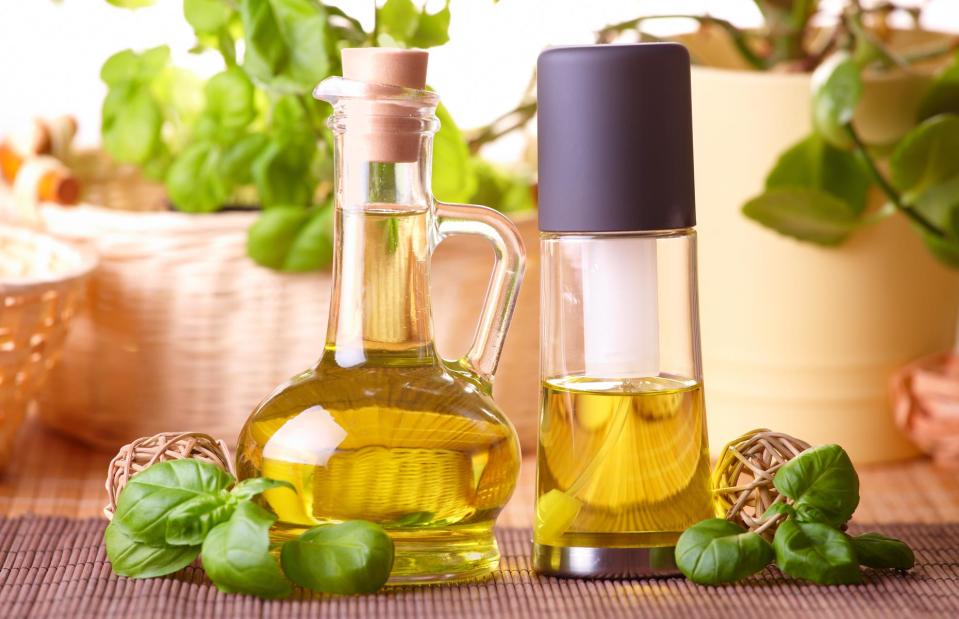
Monika Wisniewska/Shutterstock
It's worth buying a reusable, refillable oil spray to prevent food from sticking to your slow cooker (and cut down on washing up at the same time). You can buy disposable plastic liners, too – once you’ve preheated your slow cooker, simply spray the entire liner, add your ingredients, then cook as usual.
26. Avoid pasta where possible

Crock-Pot/loveFOOD
If you’re planning on serving pasta with a slow-cooker dish, we’d usually recommend cooking it separately on the hob. However, for dishes that require pasta to be cooked in with the sauce, add the pasta to the slow cooker 30 minutes or so before the end of the cooking time (otherwise, it's likely to turn soggy). It’s a different story with bespoke slow-cooker pasta recipes, though; our chicken fajita pasta dish is a case in point.
Get the recipe for chicken fajita pasta here
25. Add soft herbs at the end
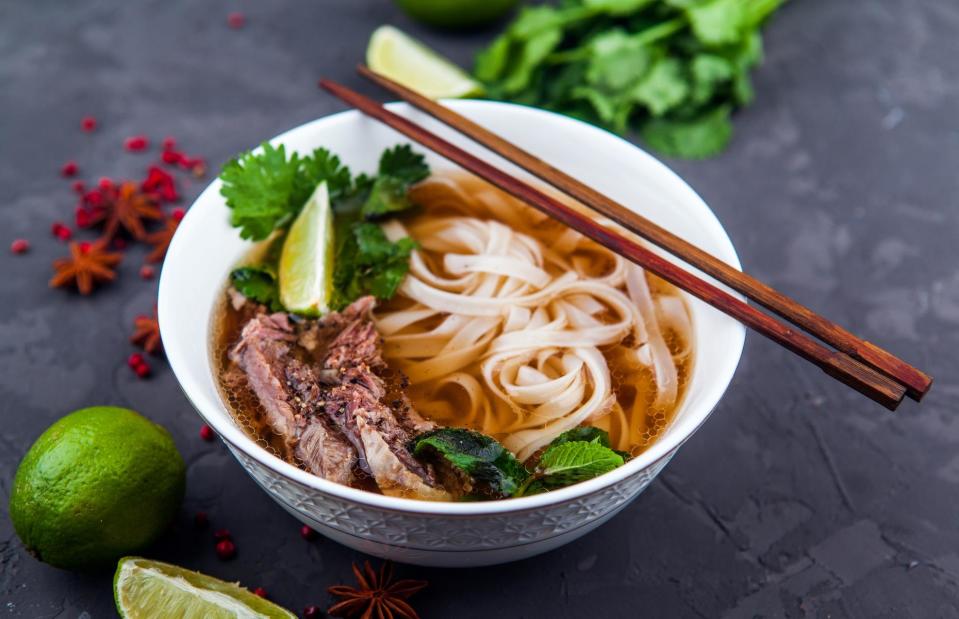
CheDima/Shutterstock
Any delicate ingredients, such as soft herbs like coriander, mint, basil and parsley, should be added once your slow-cooked dish is ready to serve, rather than to the slow cooker itself. The same goes for ingredients like spring onions, fresh spinach, and lime or lemon juice. Otherwise, you risk their distinctive flavours and textures being lost and overpowered.
24. Choose chicken thighs over breasts
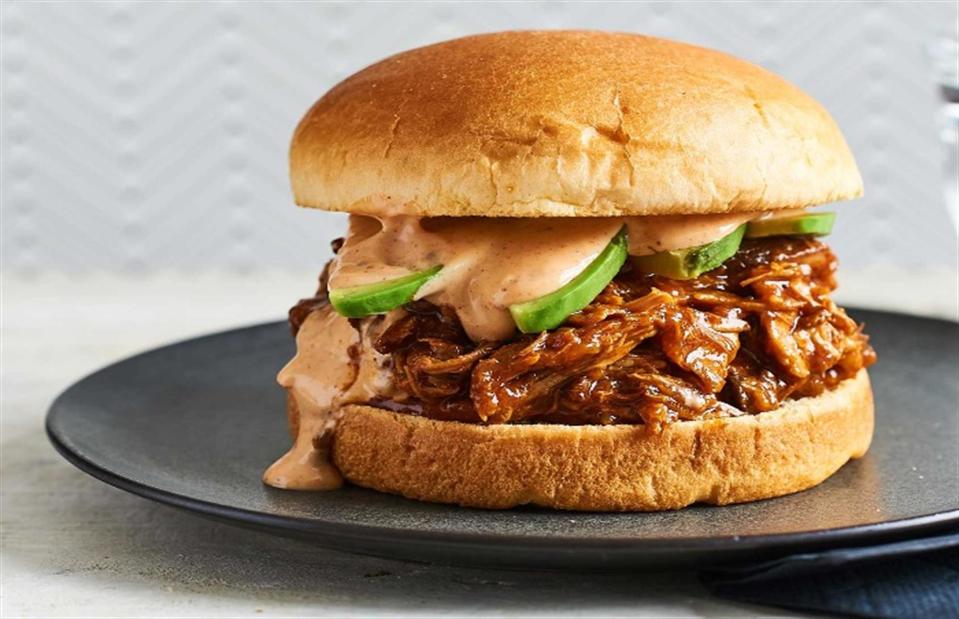
Faith Mason/HarperCollins
Lean chicken breasts dry out and become rather chewy when cooked in a slow cooker. Good-value thighs are a much better option, as they turn meltingly tender. In this recipe, thighs are slow cooked in barbecue sauce and spices, then shredded up to make a great burger or sandwich filling.
Get the recipe for pulled barbecue chicken sliders here
23. Thicken up sauces with flour

Itz Chinmoy/Shutterstock
When using your slow cooker, you may find that your sauce doesn't thicken as well as it would on the hob. Fortunately, there’s an easy way to combat this: combine 1 tsp cornflour with a dash of cold water to form a paste, then stir it into the slow cooker towards the end of the cooking time, simmering until your sauce is glossy and thick. It also helps if you lightly dust any meat you plan on using in seasoned flour before cooking.
22. Avoid delicate vegetables
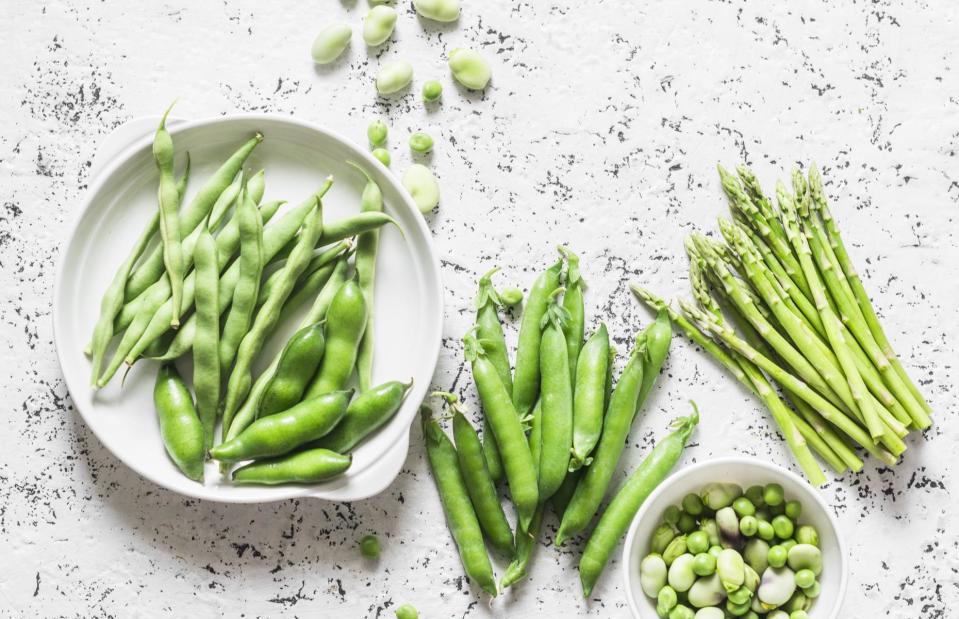
Kiran Oksana/Shutterstock
Tender greens, such as asparagus, peas and beans, have a tendency to overcook and become mushy in a slow cooker. They only take minutes to blanch on the hob anyway, so save them for speedy cooking, rather than slow. If they're part of a recipe you're making in a slow cooker, either cook them separately and add them to your finished dish, or throw them in the pot right at the end of the cooking time. They'll only need a few minutes to heat through.
21. Trim off excess fat

Anna Hoychuk/Shutterstock
If you’re cooking with meat – especially fattier cuts like pork belly – it's worth trimming the excess fat off before placing it in the slow cooker. While they’re handy, these devices lock in moisture, which can result in a very oily dish if the extra fat isn’t removed. The results will still be just as delicious, and even a little healthier, too.
20. Treat kidney beans with caution
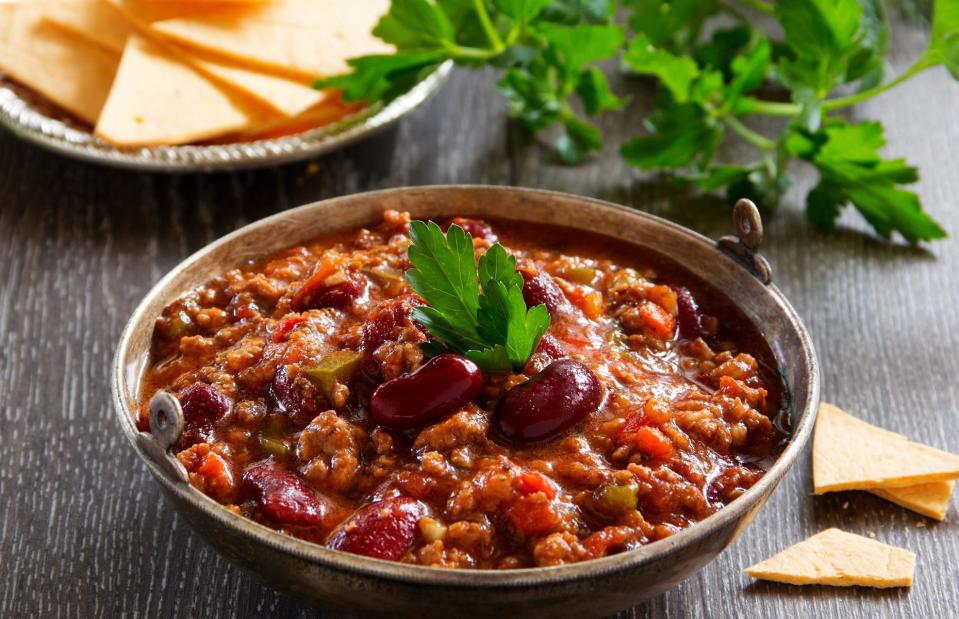
Lesya Dolyuk/Shutterstock
Raw kidney beans contain a natural toxin that's only eliminated when boiled. After soaking dried beans overnight, bring them to the boil on the hob for at least 10 minutes, or cook them fully before adding them to a slow cooker dish for the last 30 minutes or so. The same timing applies to tinned beans.
19. Don’t stir your stews

Anna_Pustynnikova/Shutterstock
This advice goes against conventional cooking wisdom, but when making a stew in a slow cooker, it’s imperative to avoid stirring it. Rather than mixing the ingredients together, you want them to remain in their layers, so each element cooks perfectly. Add your ingredients, set the slow cooker and forget about the stew until dinner time – that’s the beauty of slow cooker cuisine, after all.
18. Prep in advance

JC Through The Lens/Shutterstock
Another handy tip is to prep the ingredients for certain slow cooker dishes in advance, then store them in an airtight container or bag in the freezer. When you’re ready to make a particular meal, you can simply defrost the ingredients needed and add them straight to the slow cooker when you’re ready to go.
17. Never reheat food in the slow cooker

New Africa/Shutterstock
As tempting as it might be to reheat a slow-cooked meal in the device itself, it’s unwise to do so. Reheating in a slow cooker can lead to food sitting at unsafe temperatures for an extended period of time. Avoid this by reheating leftovers on the hob – or in the microwave or oven – until they're piping hot all the way through.
16. Fry spices first
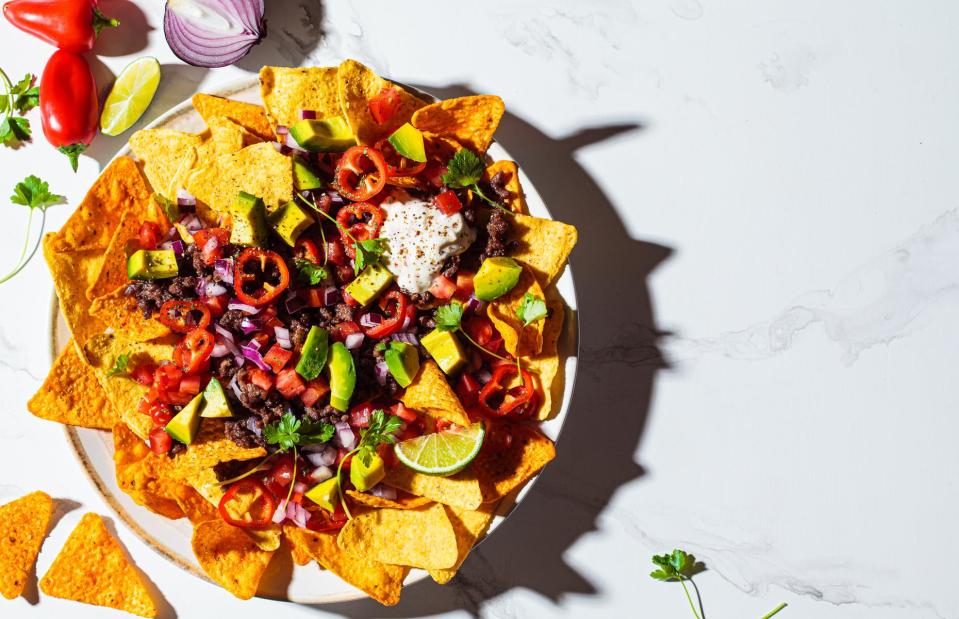
Nina Firsova/Shutterstock
If you don't fry spices before adding them to a slow cooker, they’ll have a raw, harsh taste and their flavours won’t release fully. Take the time to roast spices first, and the finished dish will be all the better for it. A good example of this is our recipe for carne asada nachos; here, beef silverside is marinated in spices, then browned before being slow cooked. It's then shredded to serve with tortilla chips, guacamole and grated cheese.
Get the recipe for carne asada nachos here
15. Add dairy at the end
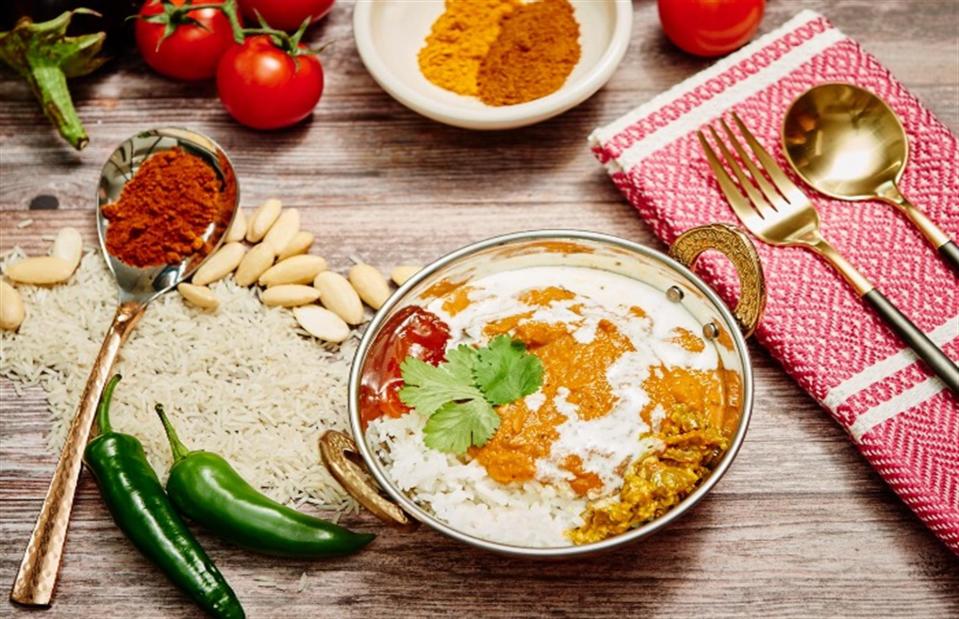
Crock-Pot/loveFOOD
Adding dairy products to your slow cooker too early will cause your dish to split and curdle – so make sure to add any milk, yogurt or cream at the end of the cooking time for smooth, velvety results. A perfect example is our vegetarian aubergine masala; here, chunks of aubergine are slow cooked in spices, tomatoes and almonds, and cream and butter are added at the end for a wonderfully silky sauce.
Get the recipe for aubergine masala here
14. Size matters

New Africa/Shutterstock
Slow cookers generally come in three sizes: small, medium or large. Even if you're just a household of two, it's worth buying a slightly larger slow cooker than you think you need; economical slow cookers are brilliant for batch cooking, and you'll want to take full advantage of that. Either freeze any leftovers, or keep them in the fridge for another day.
13. Never start and stop your slow cooker

New Africa/Shutterstock
Switching your slow cooker on and off while a dish is cooking isn’t a good idea. Doing so will allow the ingredients to sit at unsafe temperatures – potentially causing bacteria to grow, which could lead to food poisoning. Slow cookers are designed to be left unattended, so it’s fine to leave the contents simmering away overnight, or while you’re out during the day.
12. Boil off alcohol first

DenisProduction.com/Shutterstock
A slow cooker will never reach the temperature required to boil off alcohol. If, for example, you're making a stew that calls for red wine, bring the wine to the boil on the hob for a few minutes first, then add it to the slow cooker. Otherwise, you'll end up with a dish dominated by the raw, bitter taste of alcohol.
11. Ensure meat is at room temperature

Crock-Pot/loveFOOD
If you add meat straight from the fridge to a slow cooker, it will significantly increase the cooking time. Allow it to come up to room temperature first, and it will cook more evenly – and in less time. To see what we mean, try this slow-cooked Lebanese lamb recipe, which sees the meat marinated overnight (or for a minimum of three hours) with spices, olive oil and lemon, then cooked low and slow. The finished dish is perfect for piling on top of pizzas and flatbreads.
Get the recipe for Lebanese lamb here
10. Reduce the liquid
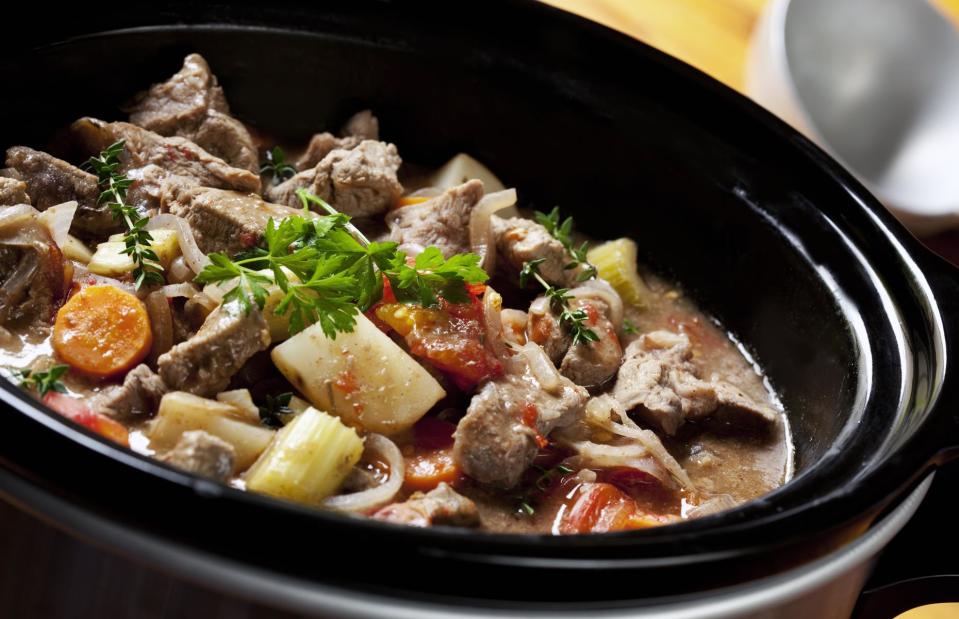
Robyn Mackenzie/Shutterstock
When converting a standard recipe to a slow cooker one, a general rule of thumb is to cut the liquid content by half. Slow cooker dishes don’t reduce as much as those cooked on the hob or in the oven, and vegetables tend to release a lot of water. If your dish does end up too watery, the quickest solution is to transfer the excess liquid to a saucepan, heat it on high until thickened, then return the reduced sauce to the dish.
9. Use cheaper cuts of meat

hlphoto/Shutterstock
Less expensive cuts of meat require long, slow cooking to tenderise them – but the time spent is well worth it, as they'll end up with bags of flavour. The likes of lamb shanks, pork shoulder, beef shin and brisket, and short ribs are all perfect candidates for the slow cooker, which will do all the hard work for you.
8. Don't slow cook shellfish

Natalia Hanin/Shutterstock
As fish and shellfish cook so quickly, they aren't suited to being simmered in a slow cooker. In our prawn curry recipe, the creamy, lightly spiced curry sauce is made in the slow cooker, and the prawns, fresh spinach and lime are added for the final 10 minutes.
Get the recipe for prawn curry here
7. Keep the lid on
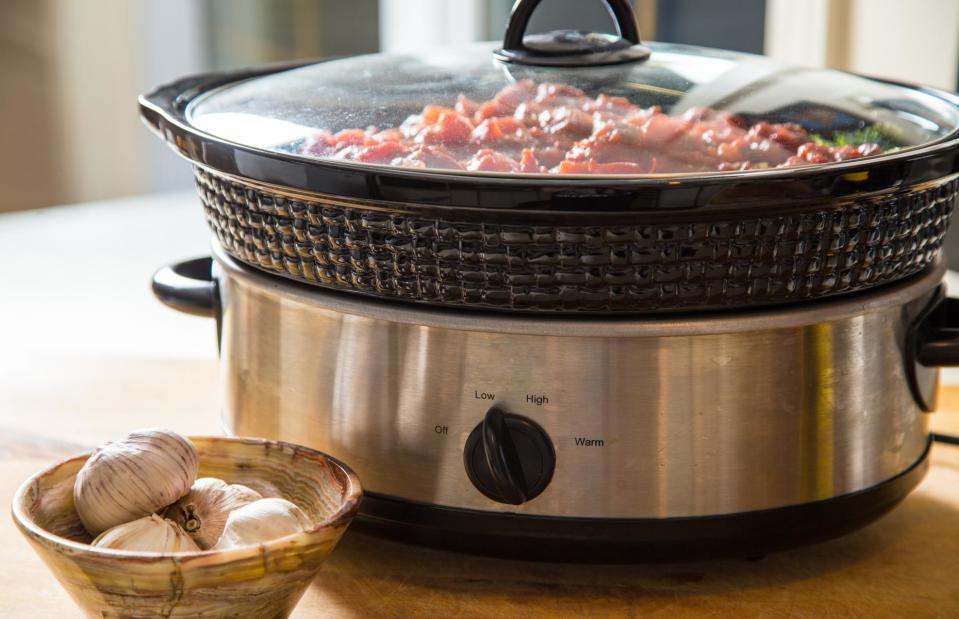
Sherwood/Shutterstock
As tempting as it may be to remove the lid of your slow cooker and take a peek at how a dish is coming along, try to resist the urge to do so. Just like opening an oven prematurely, removing the lid before your meal is ready means you’ll lose valuable heat and increase the cooking time.
6. Don't overfill
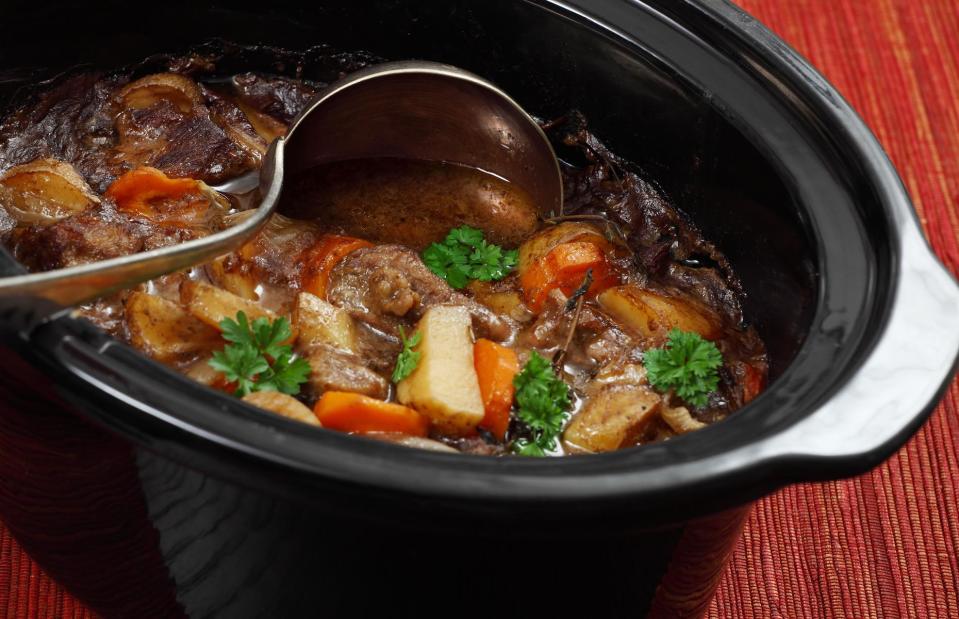
Ronald Sumners/Shutterstock
A slow cooker should be filled to a minimum of half full and a maximum of three-quarters full. If there’s too much in there, it won’t work as efficiently – and ingredients may spill over the side and make a mess, which is obviously not ideal. On the other hand, if you don't fill your slow cooker enough, it can result in the food cooking too quickly and drying out.
5. Remember to preheat

New Africa/Shutterstock
Similar to cooking with an oven, you'll save a significant amount of time by preheating your slow cooker for around 20 minutes before adding any ingredients. If you're new to slow cooking, it's also worth following recipes specifically written for slow cookers until you gain more confidence and a greater understanding of how they work.
4. Brown meat first

Radoxist studio/Shutterstock
Browning meat will add colour, taste and texture to a dish. Even if your slow cooker does have a sauté function, it's best to brown meat, onions and garlic on the hob first. For an easy Bolognese sauce, brown 16oz (450g) beef mince with a chopped onion and a garlic clove, then stir in a beef stock cube. Transfer the mixture to your slow cooker, add a chopped celery stick, a sprig of chopped rosemary, 3 1/2fl oz (100ml) red wine, 2 tbsp tomato purée and a 14oz (400g) tin of chopped tomatoes, then cook on high for four hours (or on low for eight hours).
3. Plan ahead
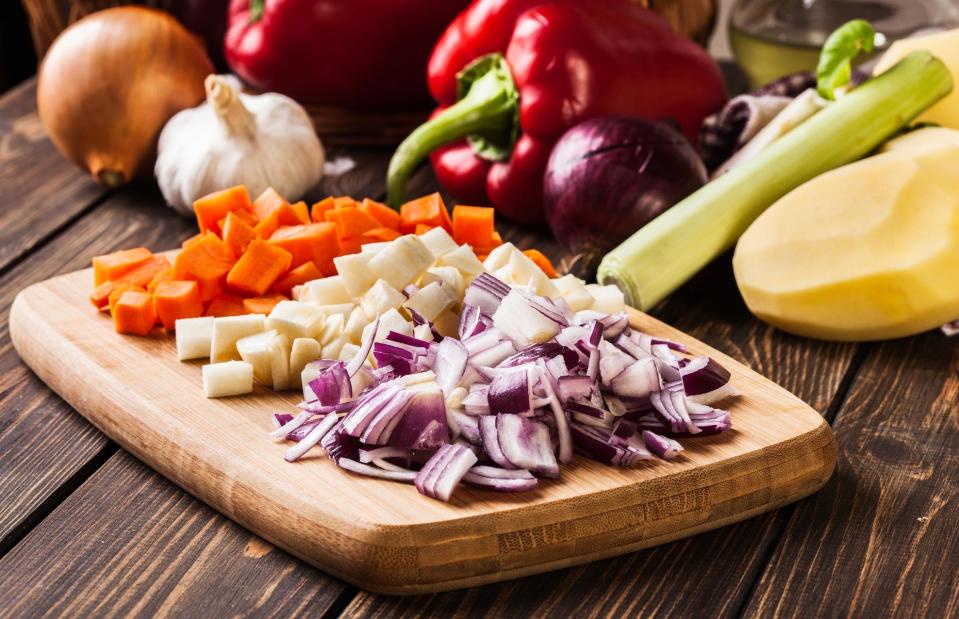
Slawomir Fajer/Shutterstock
Nobody wants to have to get up in the morning and begin chopping ingredients for their evening meal before they've even had breakfast. Instead, do your prep the night before, and have everything ready to go in the fridge. Then, in the morning, just switch on your slow cooker, throw your ingredients in and get on with your day.
2. Chop vegetables evenly

Slawomir Fajer/Shutterstock
Slow cookers might be all about ease, but the basics still matter. If a recipe calls for vegetables, make sure you cut them into equal-sized pieces, so they cook evenly. Hard root vegetables, such as potatoes, carrots, onions, parsnips and turnips, are all really well suited to slow cooking, as they retain their shape and flavour even when cooked for hours.
1. Layer ingredients
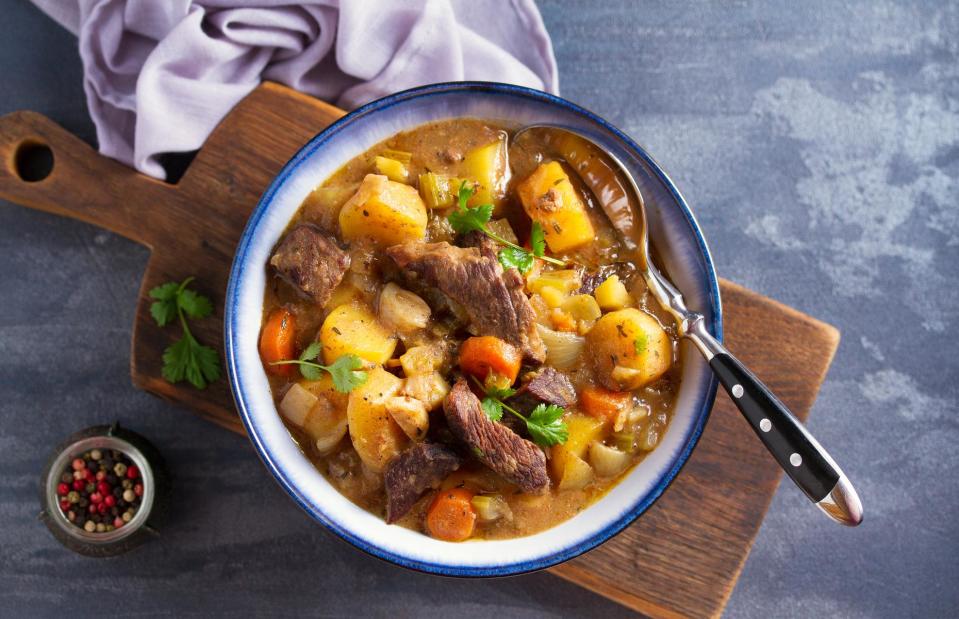
freeskyline/Shutterstock
The heat in a slow cooker comes from below, so layering your ingredients is key. Those that take the longest to cook should go in first, followed by seasonings and sauce. If, for example, you’re making a beef stew, add the seared beef pieces to the bottom of the slow cooker, follow up with the carrots, and put the potatoes and stock on top. This means that as the hours pass, the beef will become meltingly soft, while the potatoes will turn tender, rather than mushy.
Now discover the unexpected dishes you can make in your slow cooker
Last updated by Lottie Woodrow.


